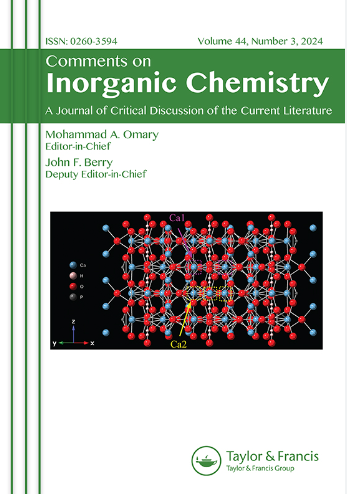Post-Synthetic Defunctionalization of Ammonium-Functionalized Zr-Based Metal-Organic Framework MIP-202 for Knoevenagel Condensation Reaction
IF 3.8
3区 化学
Q1 CHEMISTRY, INORGANIC & NUCLEAR
引用次数: 0
Abstract
ABSTRACT A new recyclable and stable catalyst based on a Zr metal-organic framework, namely MIP-202 has been constructed through a simple post‐synthetic modification strategy as an extremely efficient and applied heterogeneous catalyst for Knoevenagel condensation reaction between benzaldehyde and ethyl cyanoacetate under mild reaction conditions. The principal purpose of this study is to reduce the amount of the protonated amine functional groups (NH3 +) in the pores of MIP-202 using the solvent assisted ligand exchange (SALE), in order to achieve an optimal structure to obtain higher efficiencies in Knoevenagel condensation reaction. The resultant catalyst is characterized via various techniques including PXRD, FT-IR, FE-SEM, EDX, BET, AAS, CHN, and TG analyses. The post-modified catalyst exhibited high catalytic performance with 90% efficiency, which is an enhanced activity compared to the pristine MIP-202 MOF, and also four recycling stability without a significant decrease in catalytic activity. Therefore, it was proved that the adjustment of functional groups is an effective method for the improvement of the reaction process. The catalytic mechanism has also been investigated.氨功能化zr基金属-有机骨架MIP-202在Knoevenagel缩合反应中的解功能化研究
摘要:通过简单的合成后改性策略,构建了一种新型的可回收、稳定的Zr金属-有机骨架催化剂MIP-202,作为在温和反应条件下苯甲醛与氰乙酸乙酯之间的Knoevenagel缩合反应的高效非均相催化剂。本研究的主要目的是利用溶剂辅助配体交换(SALE)减少MIP-202孔隙中质子化胺官能团(NH3 +)的数量,以获得最佳结构,从而在Knoevenagel缩合反应中获得更高的效率。所得催化剂通过PXRD, FT-IR, FE-SEM, EDX, BET, AAS, CHN和TG等多种技术进行了表征。改性后的MIP-202 MOF具有较高的催化效率(90%),与原始MIP-202 MOF相比,活性有所提高,并且具有4个循环稳定性,且催化活性没有明显下降。由此证明,官能团的调整是改善反应过程的有效方法。并对催化机理进行了研究。
本文章由计算机程序翻译,如有差异,请以英文原文为准。
求助全文
约1分钟内获得全文
求助全文
来源期刊

Comments on Inorganic Chemistry
化学-无机化学与核化学
CiteScore
9.00
自引率
1.90%
发文量
18
审稿时长
>12 weeks
期刊介绍:
Comments on Inorganic Chemistry is intended as a vehicle for authoritatively written critical discussions of inorganic chemistry research. We publish focused articles of any length that critique or comment upon new concepts, or which introduce new interpretations or developments of long-standing concepts. “Comments” may contain critical discussions of previously published work, or original research that critiques existing concepts or introduces novel concepts.
Through the medium of “comments,” the Editors encourage authors in any area of inorganic chemistry - synthesis, structure, spectroscopy, kinetics and mechanisms, theory - to write about their interests in a manner that is both personal and pedagogical. Comments is an excellent platform for younger inorganic chemists whose research is not yet widely known to describe their work, and add to the spectrum of Comments’ author profiles, which includes many well-established inorganic chemists.
 求助内容:
求助内容: 应助结果提醒方式:
应助结果提醒方式:


